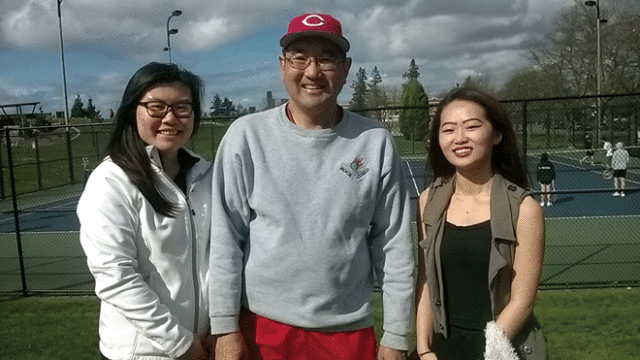
By David Yamaguchi
The North American Post
At last it is starting to be warm so we can venture from our lairs! And so here’s an experiment for you, dear reader, to try. Across the next week, see how many of the tennis courts you pass have people playing on them. Then, for comparison, drive by the Jefferson Park courts, on Beacon Hill, and see what you see there.
My guess is that you will find the public outdoor courts empty except for Jefferson. Most are ghostly relics of a quaint past when young people played games with balls and sticks. Along with bowling, golf, billiards and other “timeless” games, tennis, too, is suffering from the e-revolution. The children of baby boomers grew up playing video games.
Certainly today’s youth can learn ball sports later in life. But few such late-bloomers will develop the big swings and remarkable hand-eye coordination that mark standout players. The time for learning these are junior high and high school, when the brain and body have the capacity to learn complex motor skills.
It is not only me who has observed the emptiness of the city’s tennis courts. The pattern was first pointed out to me by Roger Mark, owner of Avanti Sports, a specialty tennis shop on NE 45th east of University Village. Mark is also owner and head pro at the Mill Creek Tennis Club.
So what is happening at Jefferson that is not at the other courts? According to Mark, one key difference is the tennis coach at Cleveland High.
Coach Roger (another “Roger”) has helped the Cleveland tennis team since 2004. He teaches his players strokes and strategy on which they can build their games. Owing to Roger, on rainy days they practice in the Blaine Memorial Church gym.
Roger is the longest-serving tennis coach in the Seattle Public Schools. He began as a volunteer assistant coach in 2004. He became head coach in 2009 after the former one retired, and the two exchanged places.
Under Roger, the co-ed tennis program at Cleveland has become the school’s third-largest sport (44 team members), behind football (76) and track (59). The tennis team needs depth, both for player development and to field school matches. In the Seattle metro league, a match requires eight boys and eight girls to fill various combinations of boys’, girls’ and mixed singles and doubles.
More than just a game, tennis will enhance the players’ lives. I know this because in the kids Roger coaches, I see my own youth. In the 1970s, south-Seattle players were coached for free by the famous Amy Yee, after whom the tennis center on Martin Luther King Way is named.
My experience with the game is that after playing for Cleveland, wherever I later moved in life, over the course of a traveling career as a student and forester, through tennis I could quickly make new friends away from the classroom and office.
Equal in value to the friendships is the positive sense of self-worth that comes with youths’ developing skills in at least one thing. As a student, whenever challenged by life, I knew that I could play tennis better than most people in the room. And that helped give me confidence.
There are also the long-term fitness benefits of regularly playing
outdoors. I could never get myself to jog. But chasing balls worked for me for decades.
There are two more things to mention about Roger. The first is that, by day (dawn to early afternoons), he is a pharmacologist at Swedish Hospital. In that capacity, over the years, he has helped save many lives. The second is that he teaches the kids more than tennis. He makes them think— seriously—about their college and career options as well.
As a freelance writer, I am guilty of putting Roger’s story on the back burner for years. It is because Roger Yamaguchi is my cousin.






